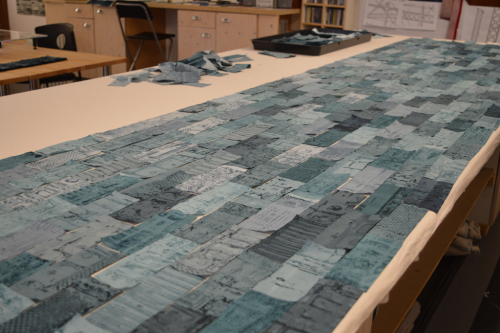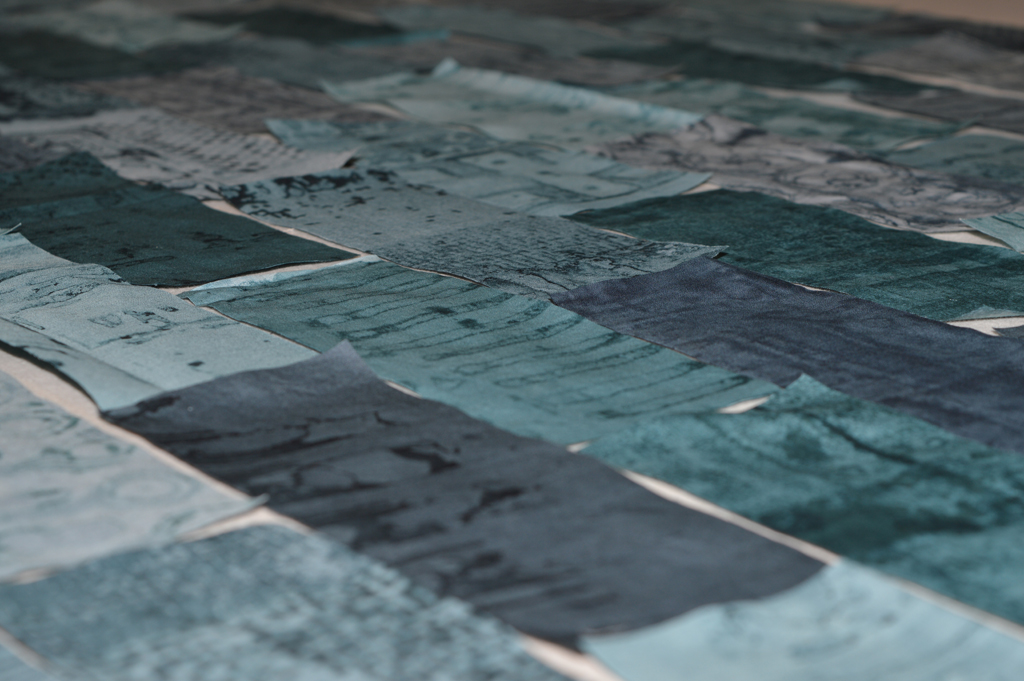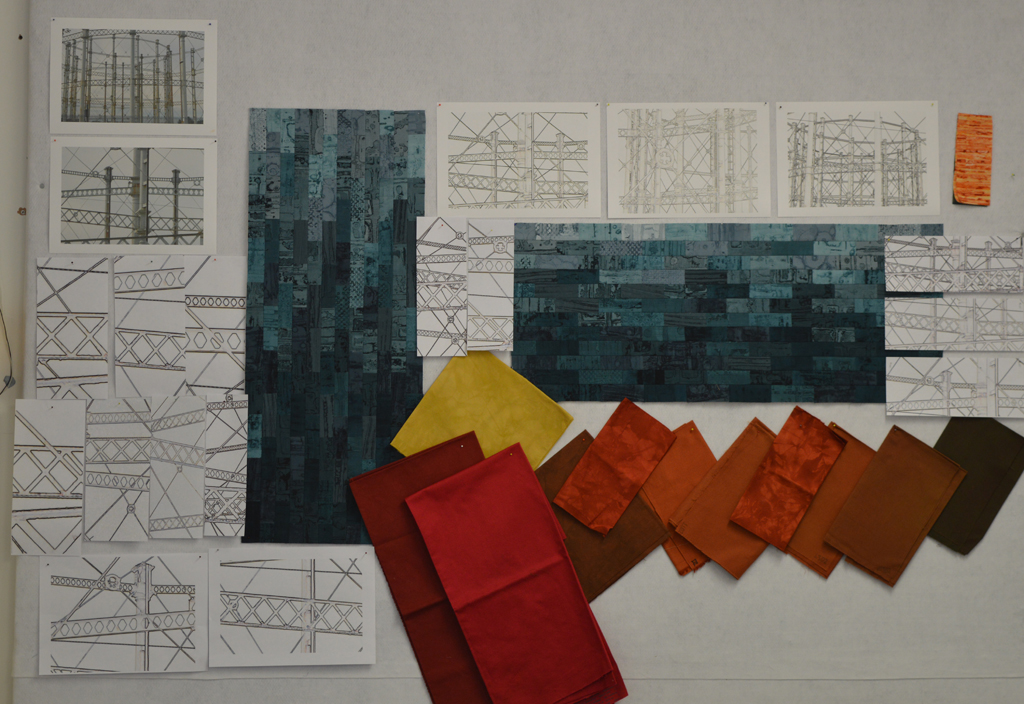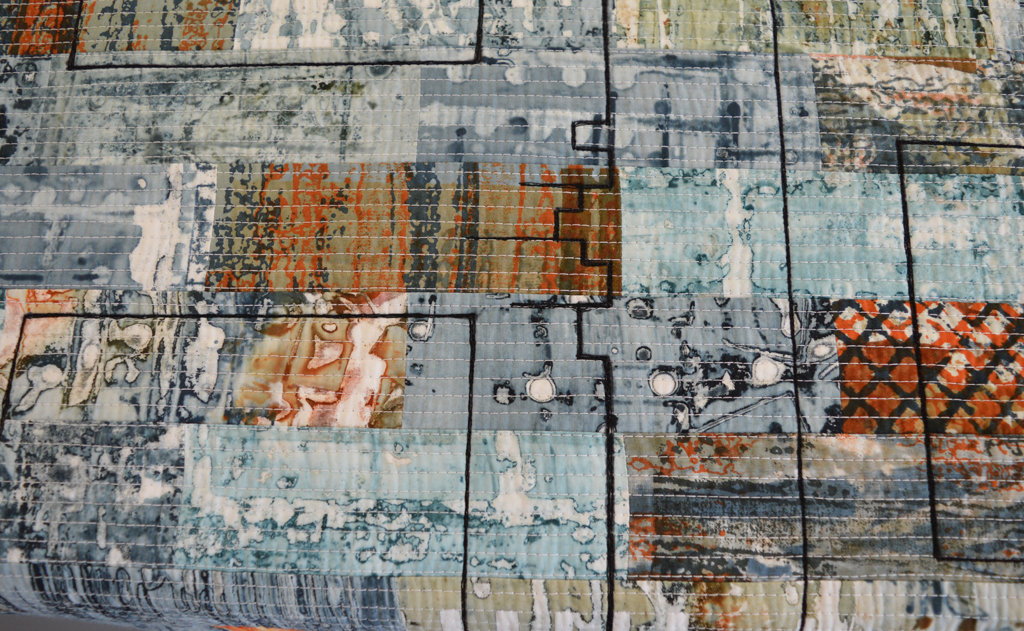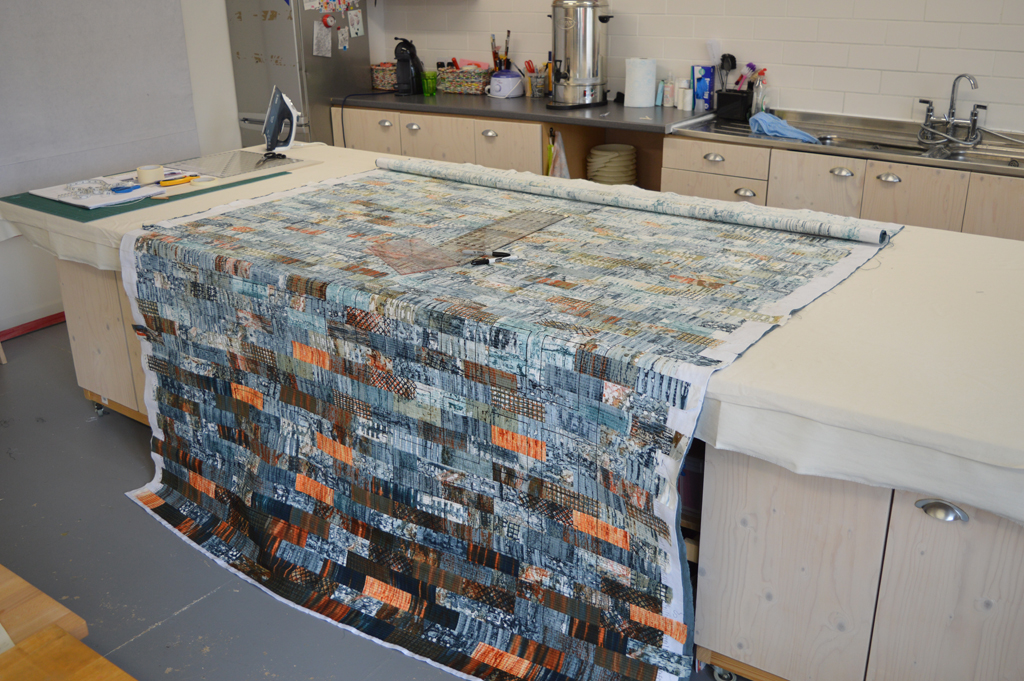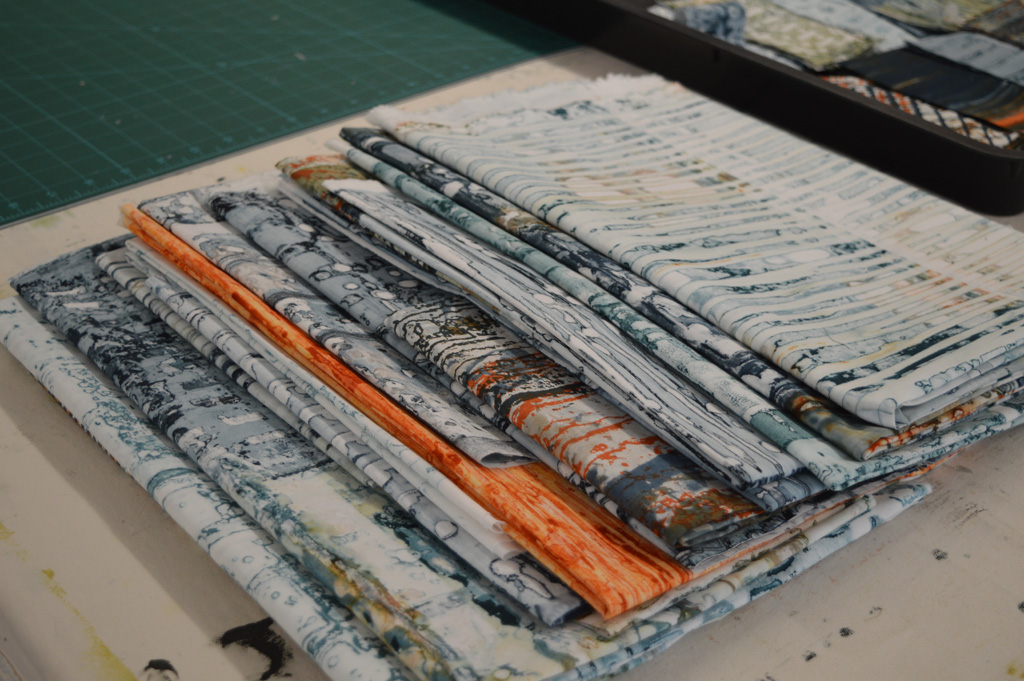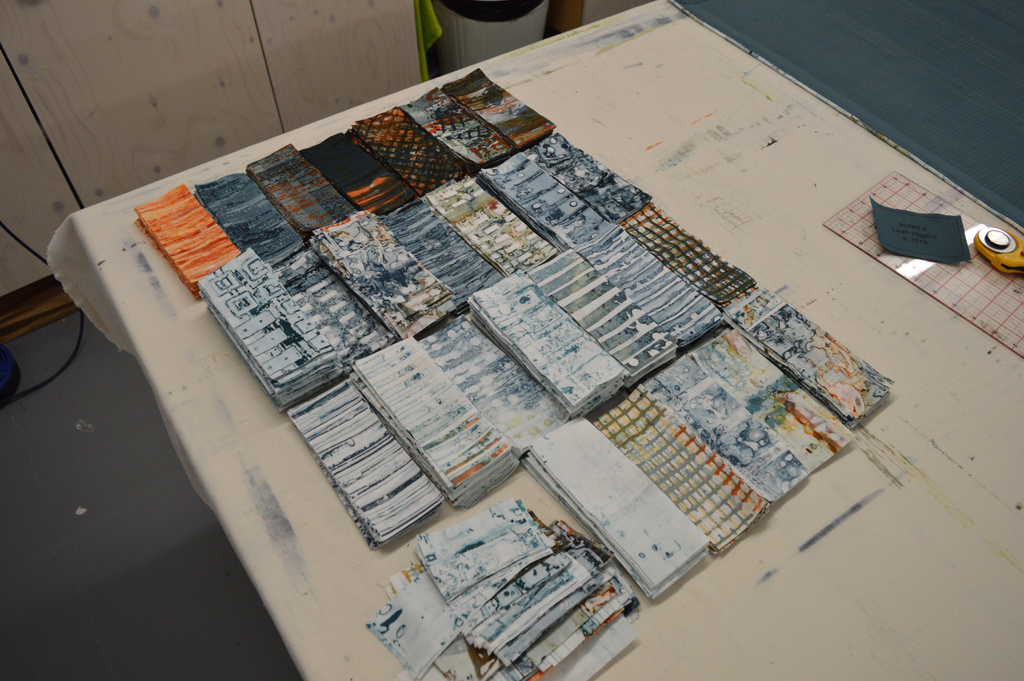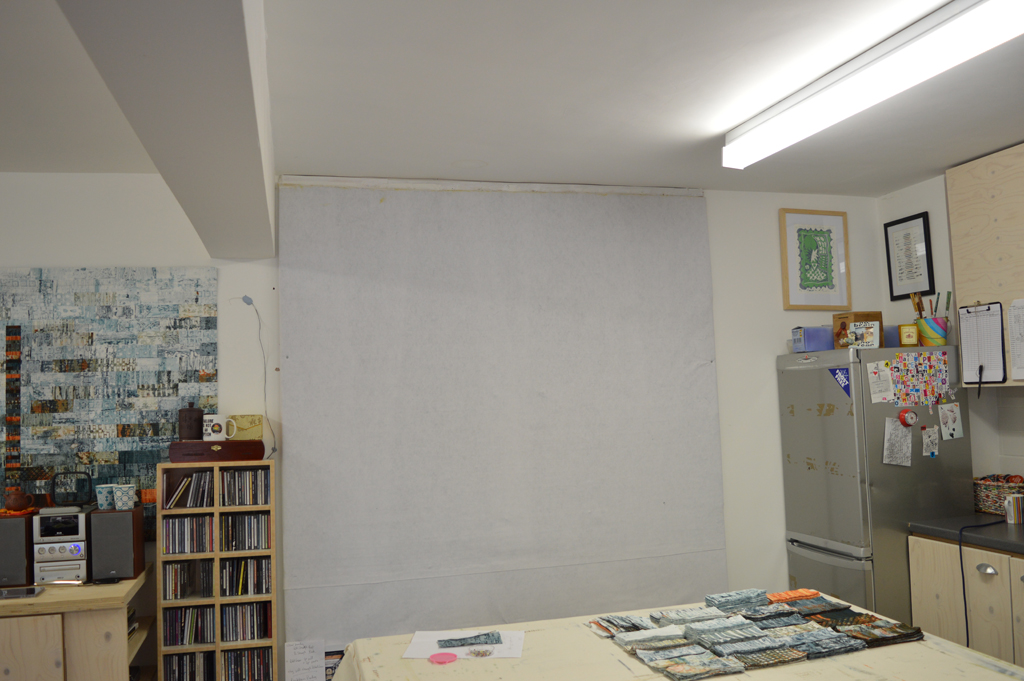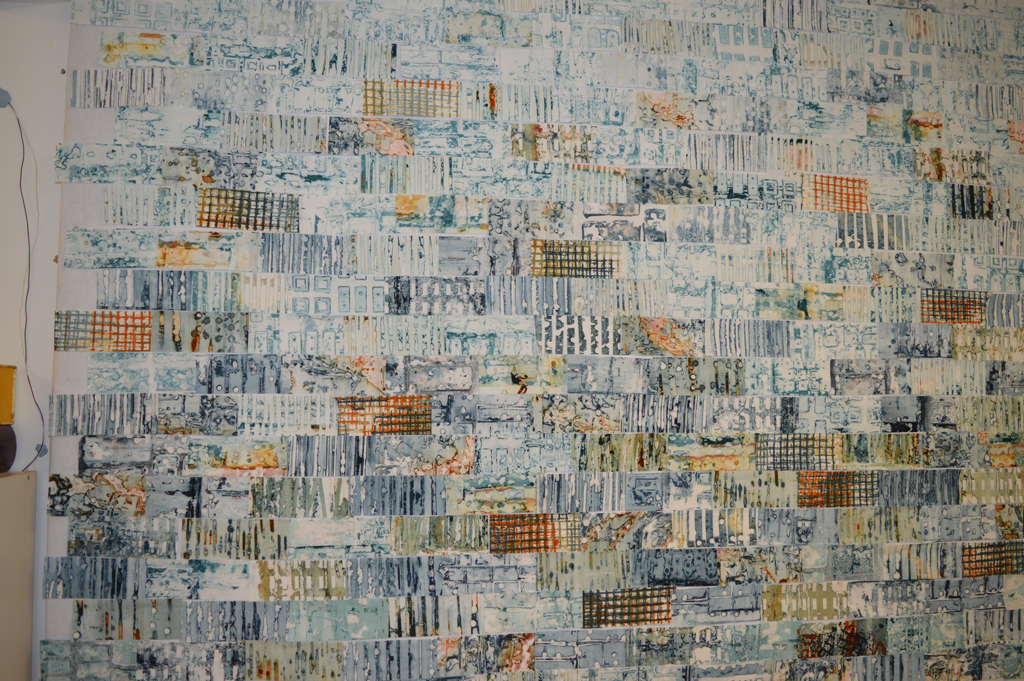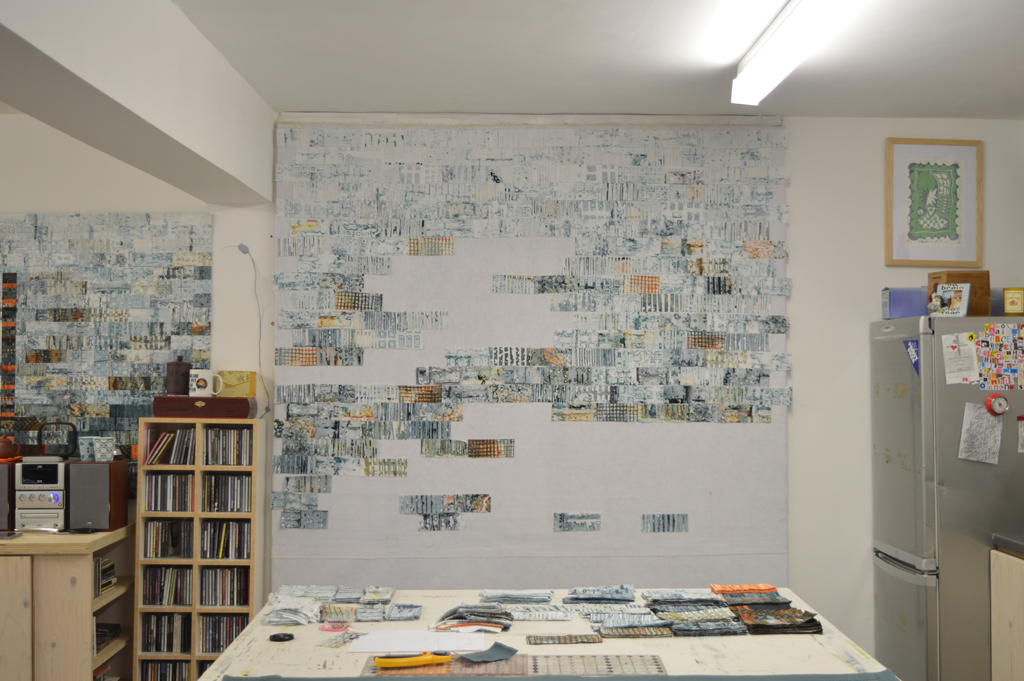Every artist has a bridge piece in them don't they? This is mine. It is not an unusual bridge in terms of design but it is quite striking when seen from the link road in St Helens. And I've tried to capture that in this quilt. The colours look solid from a distance but closer inspection reveals lots of lovely texture created by using breakdown printing in a limited colour palette. It has been made for my upcoming exhibition with Helen Conway at The World of Glass, St Helens.
I am really happy with this piece and may make more 'bridge' pieces but it did make me wonder about genre. I have intentionally tried to work in a more abstract way in recent years but, despite the colours used, this piece doesn't feel abstract. So what is it?
The Tate defines abstract art as 'art that does not attempt to represent an accurate depiction of a visual reality but instead uses shapes, colours, forms and gestural marks to achieve its effect'. Wikipedia defines it as art 'that uses a visual language of shape, form, colour and line to create a composition which may exist with a degree of independence from visual references in the world'. Hmm … well the colours may be abstract but, as I wanted it to look like a bridge, the finished piece cannot be called abstract.
The Tate defines figurative art as 'any form of modern art that retains strong references to the real world and particularly to the human figure'. Wiki says that figurative art 'describes artwork - particularly paintings and sculptures - that is clearly derived from real object sources, and is therefore by definition representational'. And the Tate defines representational as a 'blanket term for art that represents some aspect of reality, in a more or less straightforward way'. The quilt is not a painting, or a sculpture nor does it refer to the human figure but figurative seems like a good fit.
So what about the quilt world? If I wanted to enter it into Festival of Quilts which category would I choose? They don't have an 'abstract' category but their definition of an Art Quilt is 'quilts with both a strong visual impact and a high quality of execution designed to be displayed as artwork and communicating an idea, emotion or concept through the medium of textile and stitch'. Sherdley Road has strong visual impact and you will need to make my word for the fact that it is incredibly well made but it doesn't represent an idea, emotion or concept. It represents a bridge. Which means that it fits with their description of a Pictorial Quilt which are 'quilts depicting a scene or subject eg: people, animal, flowers etc as the main body of the quilt. A figurative or representational piece'. Hmm ….. A lot of the pieces entered into this category are very literal - often photo like representations of their subject. Wonder how my piece would be judged? I guess there is only one way to find out!


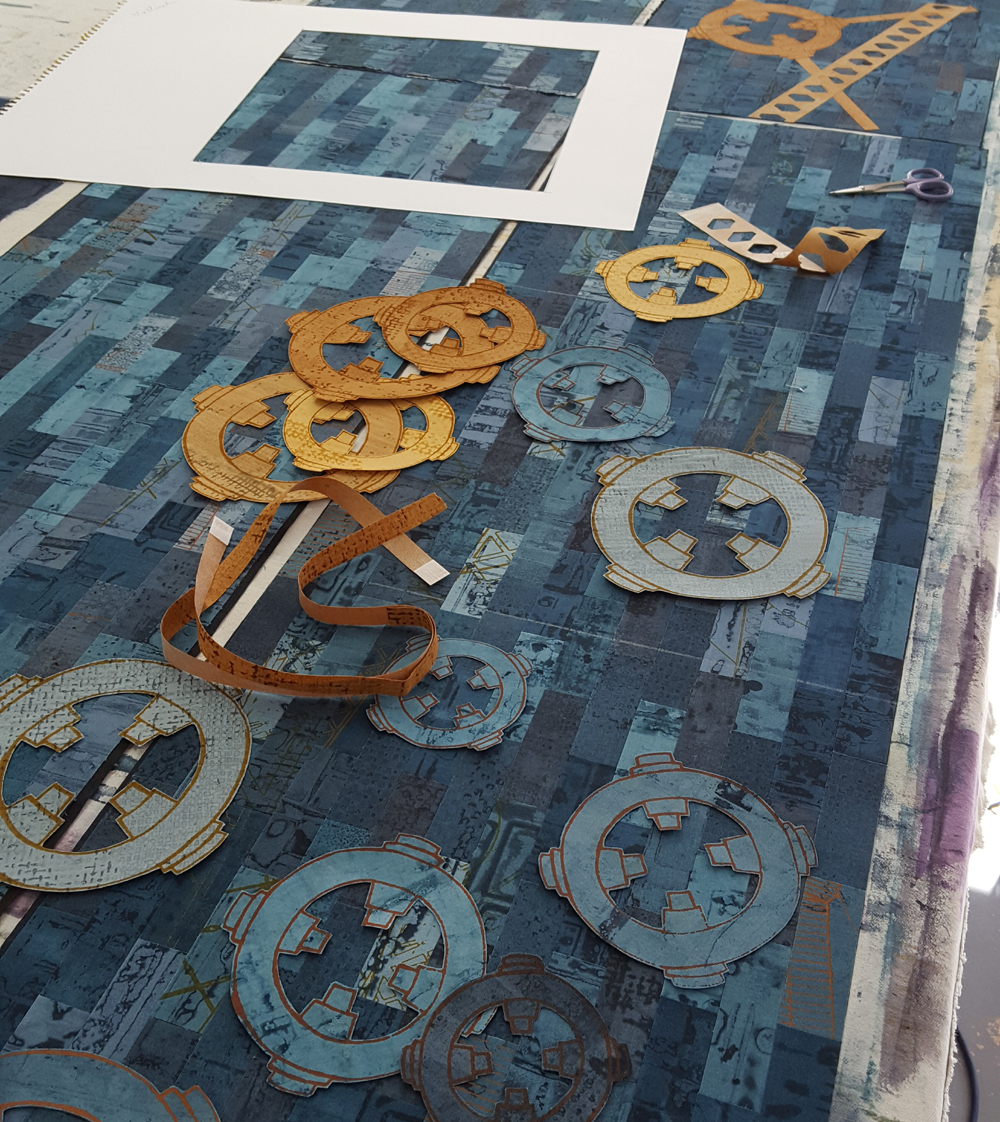 Sometimes you just get into something and you don't want to quit! On Wednesday I spent 5 hours cutting things out - which is very calming but hard on the hands. Yesterday I spent 7 hours working on a large Ruins piece (4 hours machine stitching and 3 hours sewing in ends, which is also very calming but hard on the shoulders). And today, day 65 of my 100 (week) day challenge I have spent 3.5 hours collaging and sticking things down. Which wasn't hard on anything - it was just great fun!
Sometimes you just get into something and you don't want to quit! On Wednesday I spent 5 hours cutting things out - which is very calming but hard on the hands. Yesterday I spent 7 hours working on a large Ruins piece (4 hours machine stitching and 3 hours sewing in ends, which is also very calming but hard on the shoulders). And today, day 65 of my 100 (week) day challenge I have spent 3.5 hours collaging and sticking things down. Which wasn't hard on anything - it was just great fun!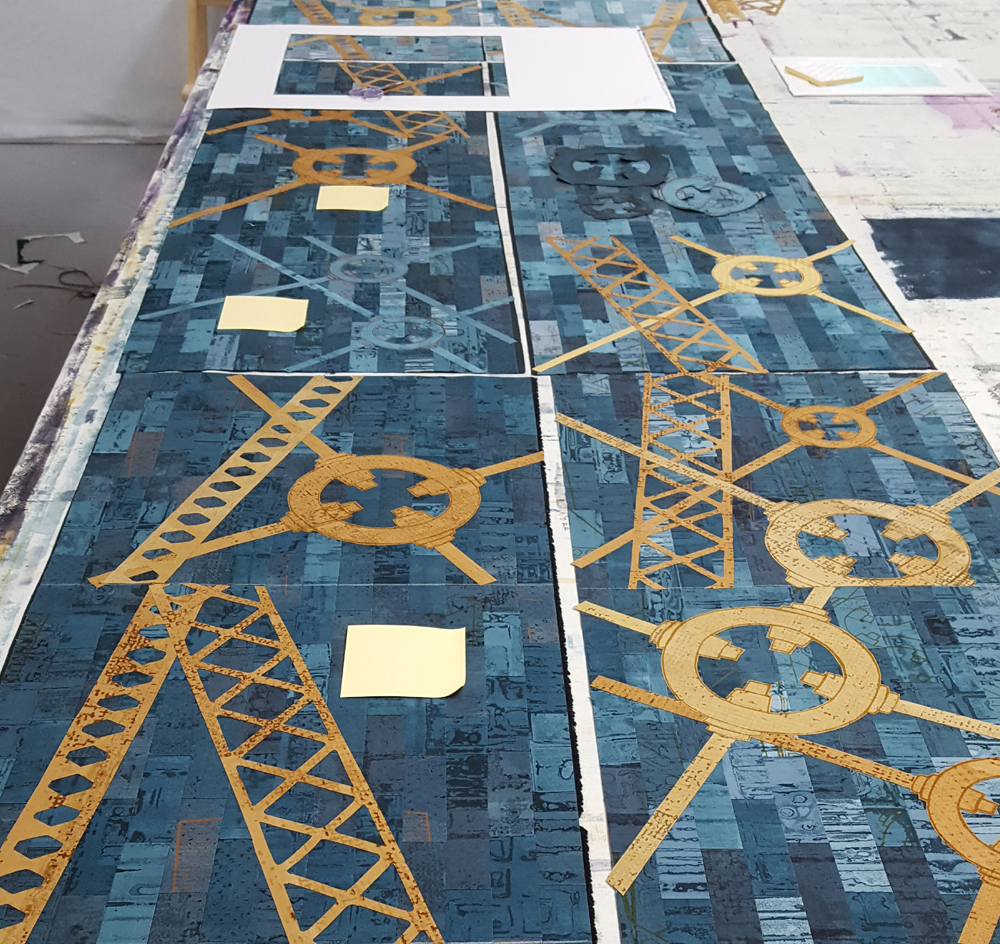
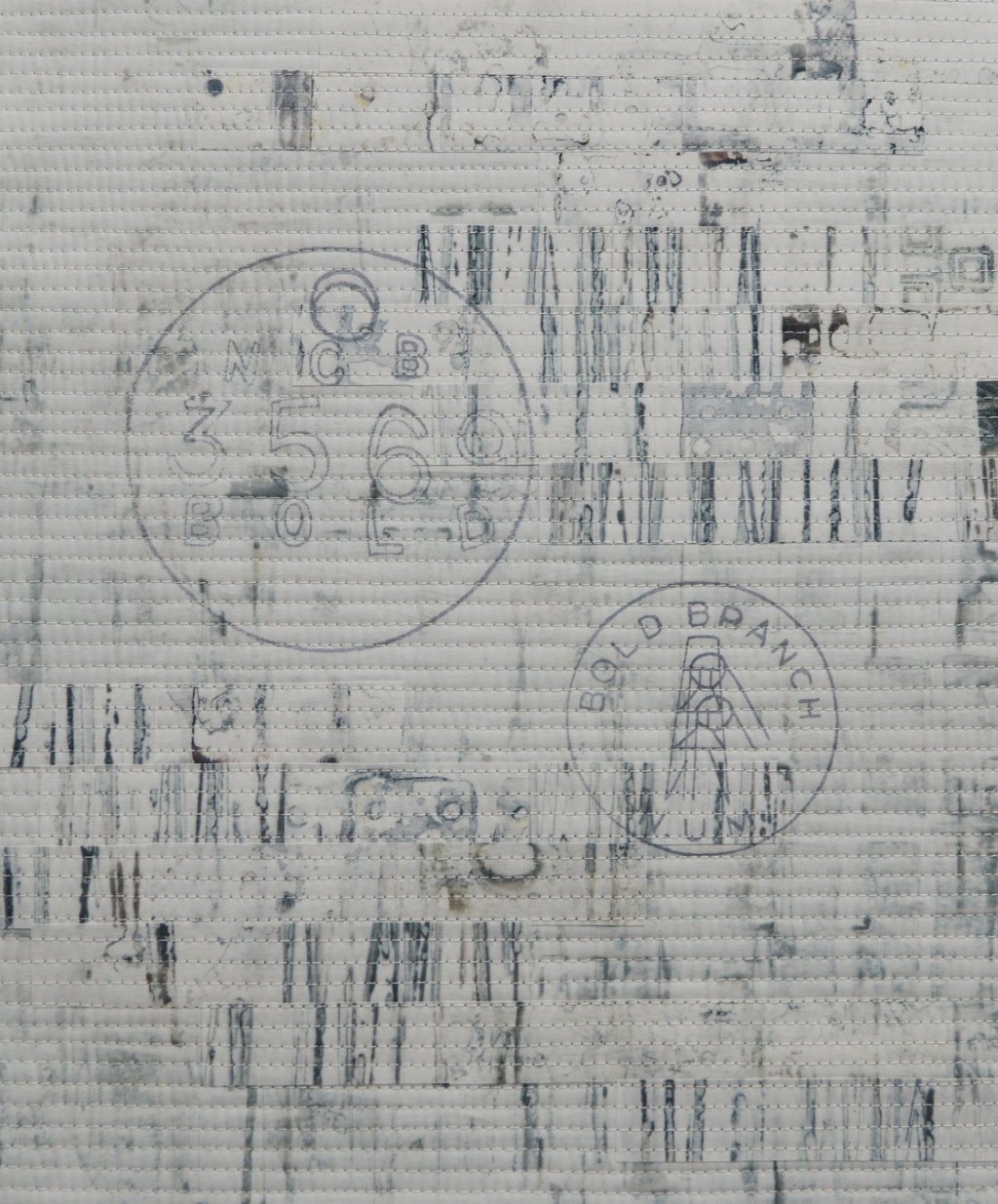 I've completed 35 days / 7 weeks of my challenge and I'm really happy with my output but it still feels like hard work making myself go to the studio some evenings.
I've completed 35 days / 7 weeks of my challenge and I'm really happy with my output but it still feels like hard work making myself go to the studio some evenings.
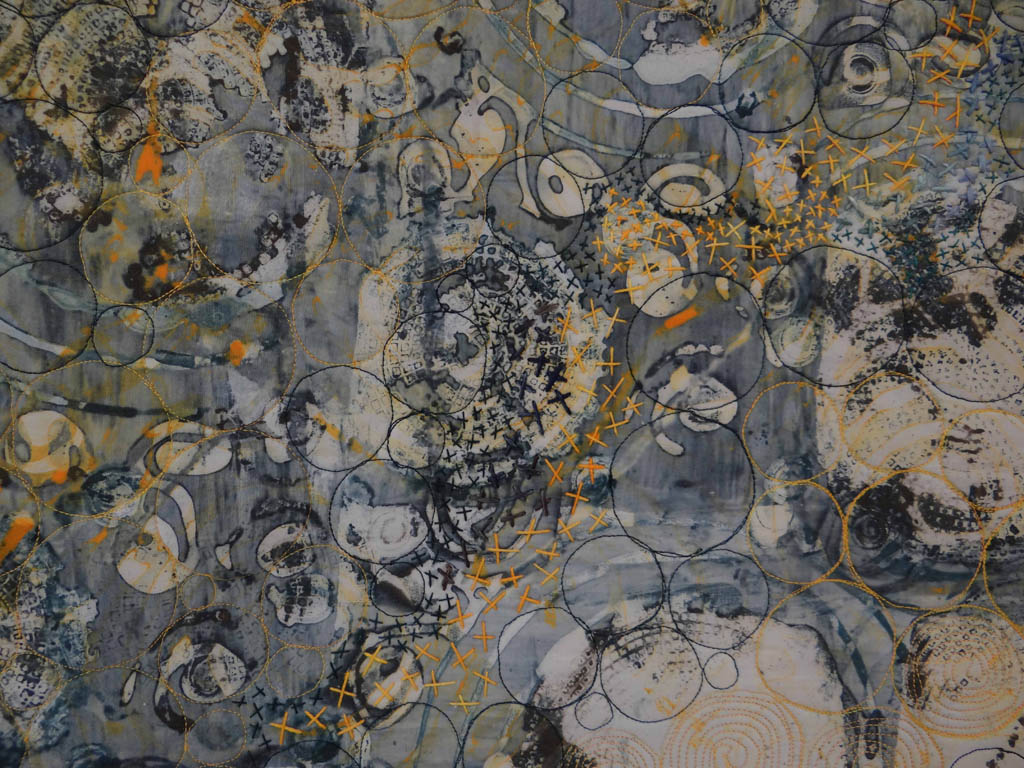
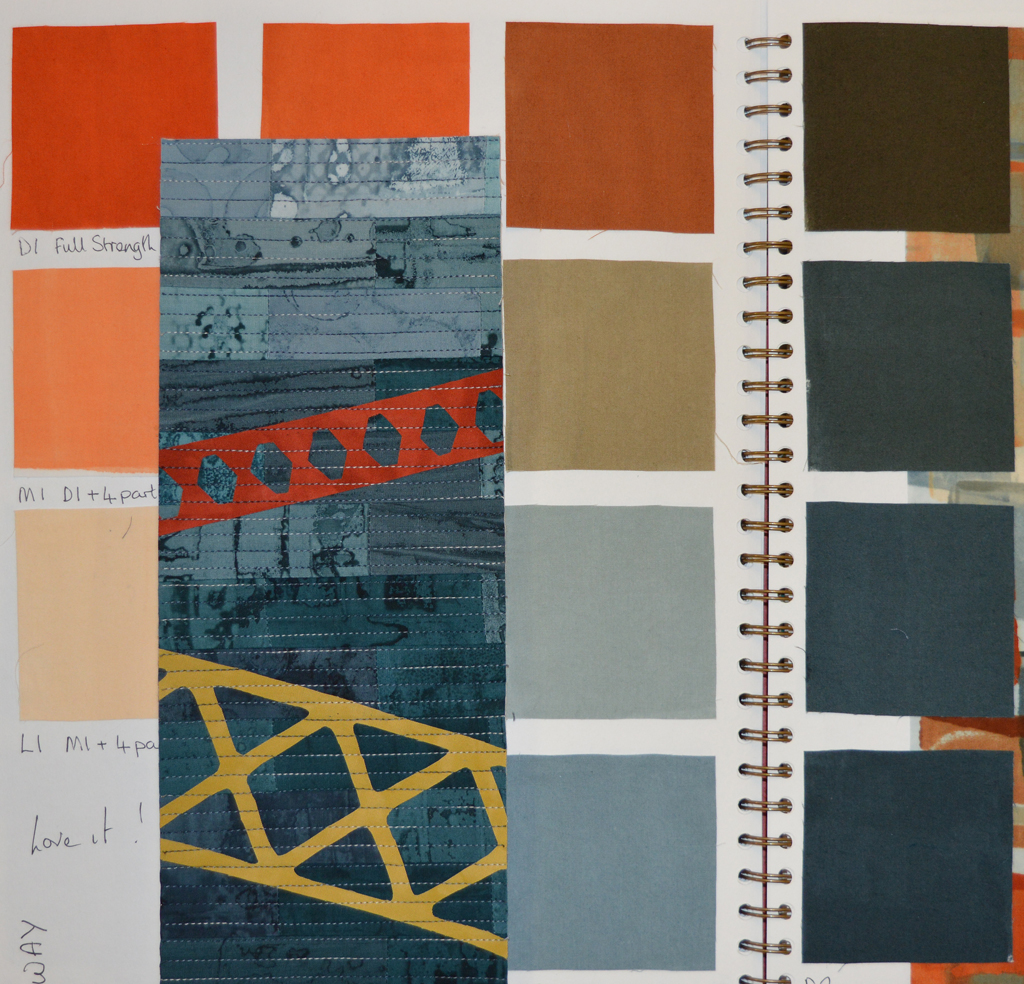 I started sampling ideas for my new series using a selection of dyed fabrics pulled from my stash. Early outcomes did not exactly grab me so I also tried using stencils to take colour out (discharge) and to add colour. Interesting but still not right. I added back colour. And got rather depressed until I decided to change the scale and to add stitch. Bingo!
I started sampling ideas for my new series using a selection of dyed fabrics pulled from my stash. Early outcomes did not exactly grab me so I also tried using stencils to take colour out (discharge) and to add colour. Interesting but still not right. I added back colour. And got rather depressed until I decided to change the scale and to add stitch. Bingo!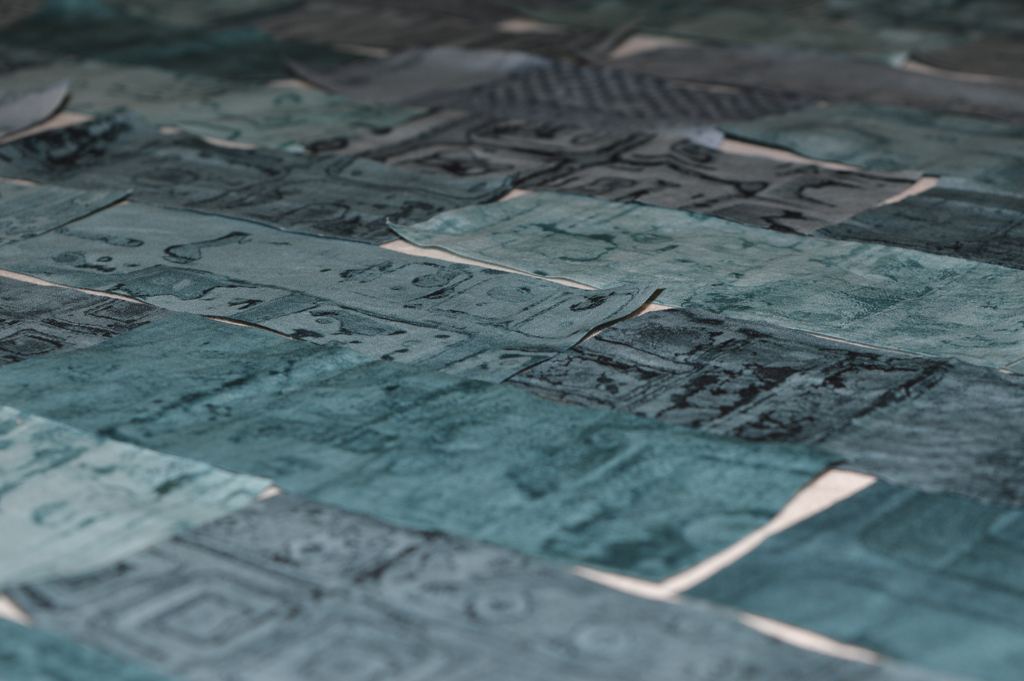 Wall building is getting a LOT of bad press right now but not all walls are a pathetic attempt to pander to a small misguided minority. (OK - political rant over). My walls are going to be things of beauty that invite people in for a closer look and, hopefully, make them smile!
Wall building is getting a LOT of bad press right now but not all walls are a pathetic attempt to pander to a small misguided minority. (OK - political rant over). My walls are going to be things of beauty that invite people in for a closer look and, hopefully, make them smile!